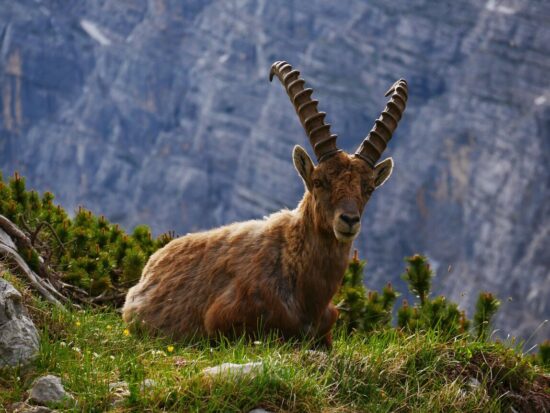The Altai Mountain specie of wool goat was made between 1944 and 1982 on the joint farmlands of the Gorno-Altai Autonomous area of the past Soviet Union. It is reserved on pasture round the year.
Thus Altai Mountain Goats is known as Gornoaltaiiskaya in Russian. Its origin can be traced to the Soviet Union. The Altai Mountain specie is the outcome of Don goats used for enhancement of the local goat breeds.
Characteristics of Altai Mountain Goat
1) They are of even size, colour, conformation and wool production capacity.
2) They are well-known for having a strong makeup and adaptableness to the extreme circumstances of extensive farming in the highlands.
3) They also have a moderately high live weight and good meat potential and are capable of fattening quickly in a short summer period.
4) The Altai Mountain goats are of superior quality to the local ones in terms of live weight (between 5-10 kg or more) and wool yield (between 3-4 times or more).
5) The live weight of males is between 65-70 kg and the females is between 41-44 kg.
Nevertheless, like the local Altai goats, they also mature relatively slowly and do not grow until the age of 5- 5 and a half years.
3 Major Reasons You Should Have Altai Mountain Goat on Your Farm
- Wool production
- Meat production
- Return on Investment (ROI)
Altai Mountain Goat for wool production
Wool gotten from the Altai Mountain goats is rich in technical potential and is a cherished product for light industries.
The guard’s hair is black in colour and true wool is dark grey. Data from research shows that the exact length of wool fibres in purebred goats is between 7.5-10 cm.
The typical diameter is between 16-17 µm in adult goats and 15-16 µm in young goats.
There is no clear difference in the wool quality between thighs and flanks. The guard-hairs have a diameter of between 75-90 µm. the content of wool in the fleece of thoroughbred animals is between 65-70%. Consistency between them is less than 10%.
Wool produce fo Altai Mountain Goat are 450-600g for females and 600-900g for males. Fibre length is between 8-9 cm for both.
The sustainability of Altai mountain goats in conditions of extensive husbandry is quite satisfactory.
The year-round maintenance on pastures does not result in a decrease of the quality (strength, superiority, length,) of the wool, because it usually grows in favourable feeding seasons. For these breed of goats, the breaking length of wool (with 16-20 um diameter) is 9-9.5 km.
In contrast, Merino wool up to 1/23 µm in diameter is well-thought-out to be strong enough if it has a breaking length of not less than 7 cm.
Rearing of Altai Mountain goats is directed to the enlargement of the population of pedigree goats and to increase the production of wool and live weight, without losing the good adaptableness to the special conditions of Siberia.
Nanny goats (females) of Altai Mountain Goat weigh 41 to 44kg (90 to 97lb) while males (billy goats) weigh 65 to 70kg (143 to 155lb).
Altai Mountain goat is also fantastic in meat production more than the French-Alpine Goat.
Research has shown that apart from the length and volume of the wool they grow, they can also be productive in terms of meat production three times or more than the local goats in Africa.
Altai Mountain Goat in Africa
Altai Mountain Goat can be found in Northern Nigeria, but very rare unlike Anglo-Nubian goat and in South Africa, it has been used as a project by Sentrachem, a South African agricultural chemical company.
As such, approximately 500 Altai Mountain goats were released in South Africa in 1997.
Final thought:
The large production of this specie is more profitable because of its meat and cashmere. This helped spur agricultural production in South Africa and bolster the fibre and Cashmere wool industry.


